
Staghorn sumac, Rhus typhina, a member of the Anacardiaceae (cashew or sumac) family, is a scraggly-looking shrub commonly seen growing on roadsides and other disturbed areas through the eastern U.S. and Canada. The species is not typically considered a good garden plant, as it suckers rampantly, can grow to 30 feet and is not particularly ornamental.
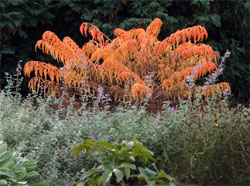
Tiger Eyes™, a 2004 release from Bailey Nurseries, is a big departure from the typical staghorn sumac. An employee of the nursery discovered this mutation of ‘Laciniata’ among a stand of other sumacs at the nursery. This golden-leaved, dwarf, slow-spreading selection (R. typhina ‘Bailtiger’ PPAF) is a valuable addition to the landscape.
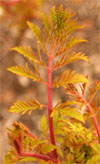
This striking foliage plant offers a long season of interest with deeply-cut, almost lacy leaves. The new growth starts out a vivid chartreuse but soon changes to a bright yellow. It remains that color throughout the growing season, without burning even in full sun. In autumn the plants turn a brilliant scarlet-orange layered over the yellow, for an impressive, luminous show.

The fuzzy-looking, purplish-pink stems offer a pleasing contrast to the lemony foliage. The plant has an open, loose form with a flat crown and the branches angle upward, while the lacy leaves droop downward, resulting in an elegant look overall. The branches in winter can be quite picturesque.
Terminal panicles of greenish-yellow flowers appear in summer, followed by velvety, reddish bunches of fruits (drupes) that persist through the winter until birds consume them.
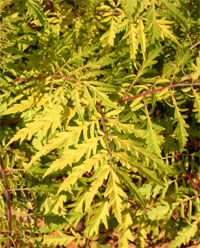
This is a plant to add dramatic impact in a garden. It can be used as a specimen plant, integrated with other shrubs in the middle of the border, or used in mass plantings. Its bold architectural quality makes it an interesting focal point, yet it can also be used as a transitional shrub between the cultivated landscape and unmanaged areas.
One planting idea is to use in a mixed border backed by several tall, dark-green ‘Techny’ arborvitae, planted adjacent to a purple-leaved ‘Diabolo’ ninebark and with blue-flowering Nepeta faassenii ‘Walker’s Low’, pale yellow Coreopsis verticillata ‘Moonbeam’ and yellow foxglove (Digitalis grandiflora). Its yellow leaves would combine well with other perennials such as purple salvias, orange daylilies or red monarda. Tiger Eyes™ could even be grown as a container plant, with suitable winter protection.
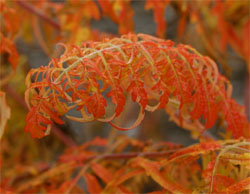
Tiger Eyes™ is easy to grow and hardy to zone 4 but is not as large or invasive as the normal green types (although several new shoots appeared this spring a few feet from the main trunk), making it ideal for the smaller garden. At maturity the plant is only 6-8 feet in height and spread, forming an upright, rounded shrub.
Plant Tiger Eyes™ sumac in well-drained soil and full to part sun. It tolerates poor soils quite well, thrives in clay and is drought tolerant once established.
– Susan Mahr, University of Wisconsin – Madison
Ask Your Gardening Question
If you’re unable to find the information you need, please submit your gardening question here:





 Silver Leaf
Silver Leaf Red Star Rust
Red Star Rust Tree Species Recommended for Fall Planting
Tree Species Recommended for Fall Planting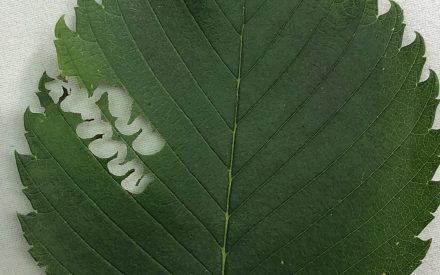 Elm Zigzag Sawfly
Elm Zigzag Sawfly


